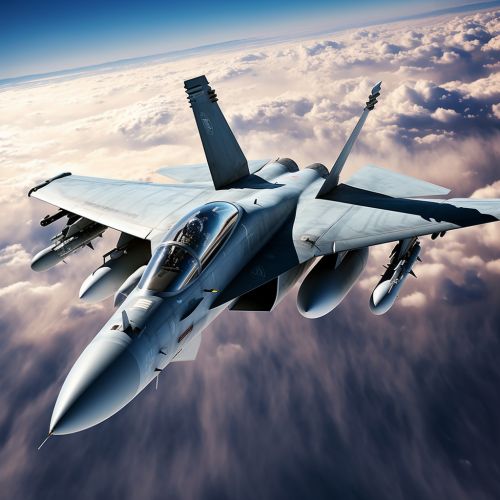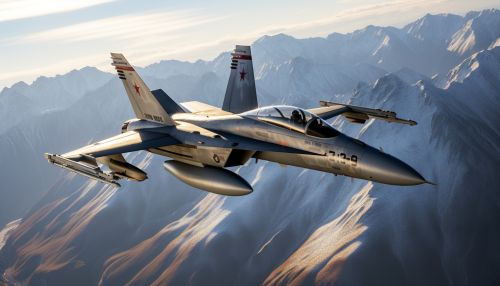F/A-18 Hornet
Design and Development
The F/A-18 Hornet is a twin-engine, supersonic, all-weather, carrier-capable, multirole combat jet, designed as both a fighter and attack aircraft (hence the F/A designation). It was developed by McDonnell Douglas and Northrop in the 1970s. The Hornet is also used by the air forces of several other nations, and since 1986, by the U.S. Navy's Blue Angels.


The F/A-18 has a top speed of Mach 1.8 (1,190 mph or 1,915 km/h at 40,000 ft or 12,190 m). It can carry a wide variety of bombs and missiles, including air-to-air and air-to-ground, supplemented by the 20 mm M61 Vulcan cannon. It is powered by two General Electric F404 turbofan engines, which give the aircraft a high thrust-to-weight ratio.
Operational History
The F/A-18 first saw combat action in 1986 during the Libyan bombing and subsequently participated in the 1991 Gulf War and 2003 Iraq War. The U.S. Navy's Strike Fighter Tactics Instructor program (SFTI program), more popularly known as TOPGUN, uses the Hornet to train tactical aviators.
Variants
The F/A-18 has a number of variants, including the improved F/A-18C and D Hornet models, and the newer E and F Super Hornets. The Super Hornet has a larger airframe, more powerful engines, and advanced avionics systems.
Operators
In addition to the United States, the F/A-18 is used by the armed forces of Australia, Canada, Finland, Kuwait, Malaysia, Spain, and Switzerland. The Spanish Air Force was the first international customer, opting to purchase the F/A-18A model.
